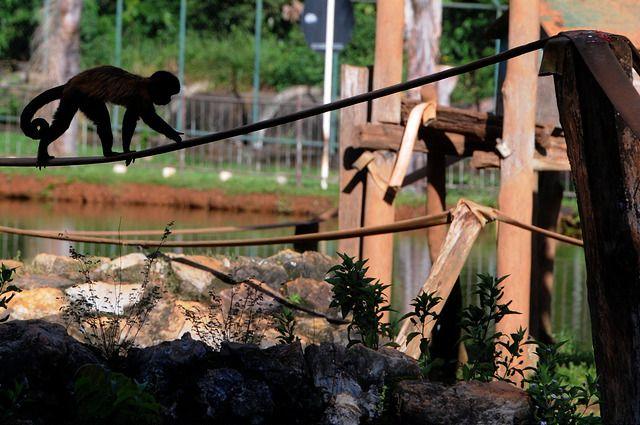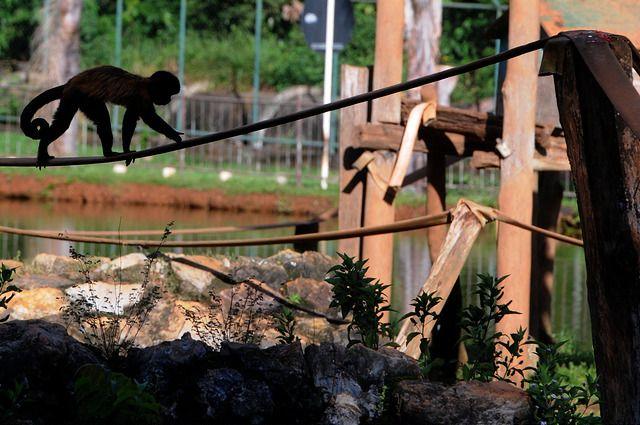
Credit: Renato Araújo/Agência Brasília. via Flickr
Rhesus macaques that were vaginally infected with Zika virus showed higher prevalence of Zika in the reproductive tract than previously seen in macaques that received skin injections of the virus. The findings, published in PLOS Pathogens, suggest that vaginal transmission may increase the risk or severity of fetal Zika disease compared to mosquito transmission.
Zika infection causes mild symptoms in adults, but it can cause severe birth defects in the fetuses of infected pregnant women. Usually, Zika virus spreads via mosquito bites, but it can also be transmitted during sex. Little is known about the different effects of mosquito transmission versus sexual transmission.
To improve understanding of the role of sexual transmission in Zika infection, Timothy Carroll of U.C. Davis and colleagues vaginally injected six female rhesus macaques with Zika virus. Then, as the infection progressed and the virus began to replicate, the scientists monitored the amount of the virus in the monkeys' blood and reproductive tract secretions.
The researchers detected Zika virus in the reproductive tracts of all six infected macaques several days before it appeared in blood plasma samples. In contrast, previous studies in which monkeys were infected via skin injection have reported detection of the virus in the blood shortly after injection, and Zika was only rarely found in reproductive tract secretions.
These results suggest that Zika virus prefers the reproductive tract after vaginal transmission, but not after skin transmission. Thus, fetal Zika disease may be more likely or more severe after sexual transmission than after mosquito transmission. With further research, these findings could aid efforts to understand, prevent, or treat Zika infection.
"The high levels of Zika virus replication in the female reproductive tract after vaginal inoculation of rhesus macaques was unexpected because virus shedding in genital secretions is difficult to detect after subcutaneous inoculation," the authors further explain. "This finding suggests that fetuses may be especially at risk for virus infection, and associated complications, when women acquire Zika virus through sex."
###
In your coverage please use this URL to provide access to the freely available article in PLOS Pathogens: http://journals.plos.org/plospathogens/article?id=10.1371/journal.ppat.1006537
Citation: Carroll T, Lo M, Lanteri M, Dutra J, Zarbock K, Silveira P, et al. (2017) Zika virus preferentially replicates in the female reproductive tract after vaginal inoculation of rhesus macaques. PLoS Pathog 13(7): e1006537. https://doi.org/10.1371/journal.ppat.1006537
Funding: This work was supported by Public Health Service grants P51RR00169 that supports the CNPRC and P51RR000167 and P51OD011106 that support the WNPRC from the Office of Research Infrastructure Programs and R21OD023818 to CJM from National Institutes of Health. The funders had no role in study design, data collection and analysis, decision to publish, or preparation of the manuscript.
Competing Interests: The authors have declared that no competing interests exist.
Media Contact
PLOS Pathogens
[email protected]
Related Journal Article
http://dx.doi.org/10.1371/journal.ppat.1006537





